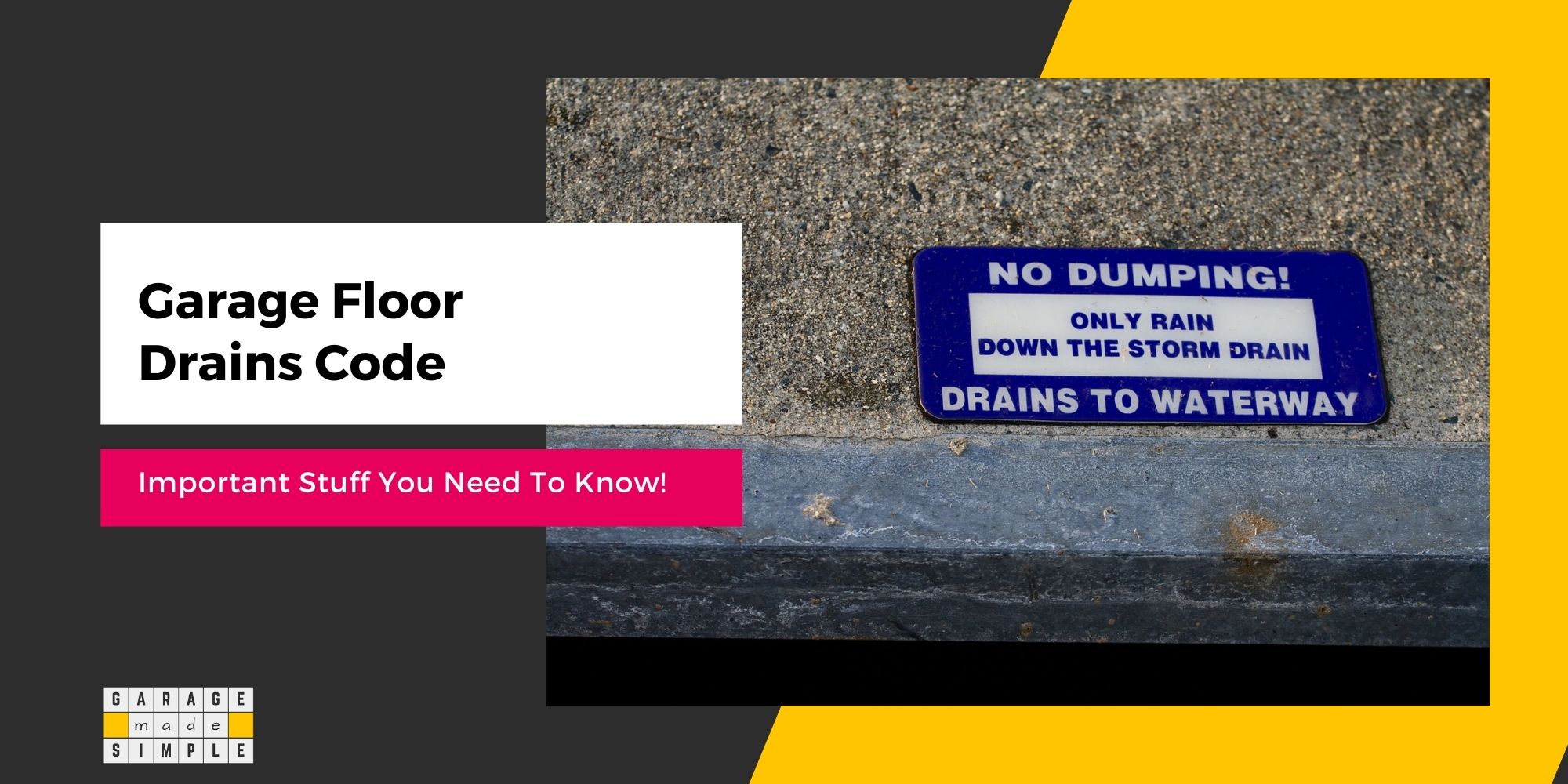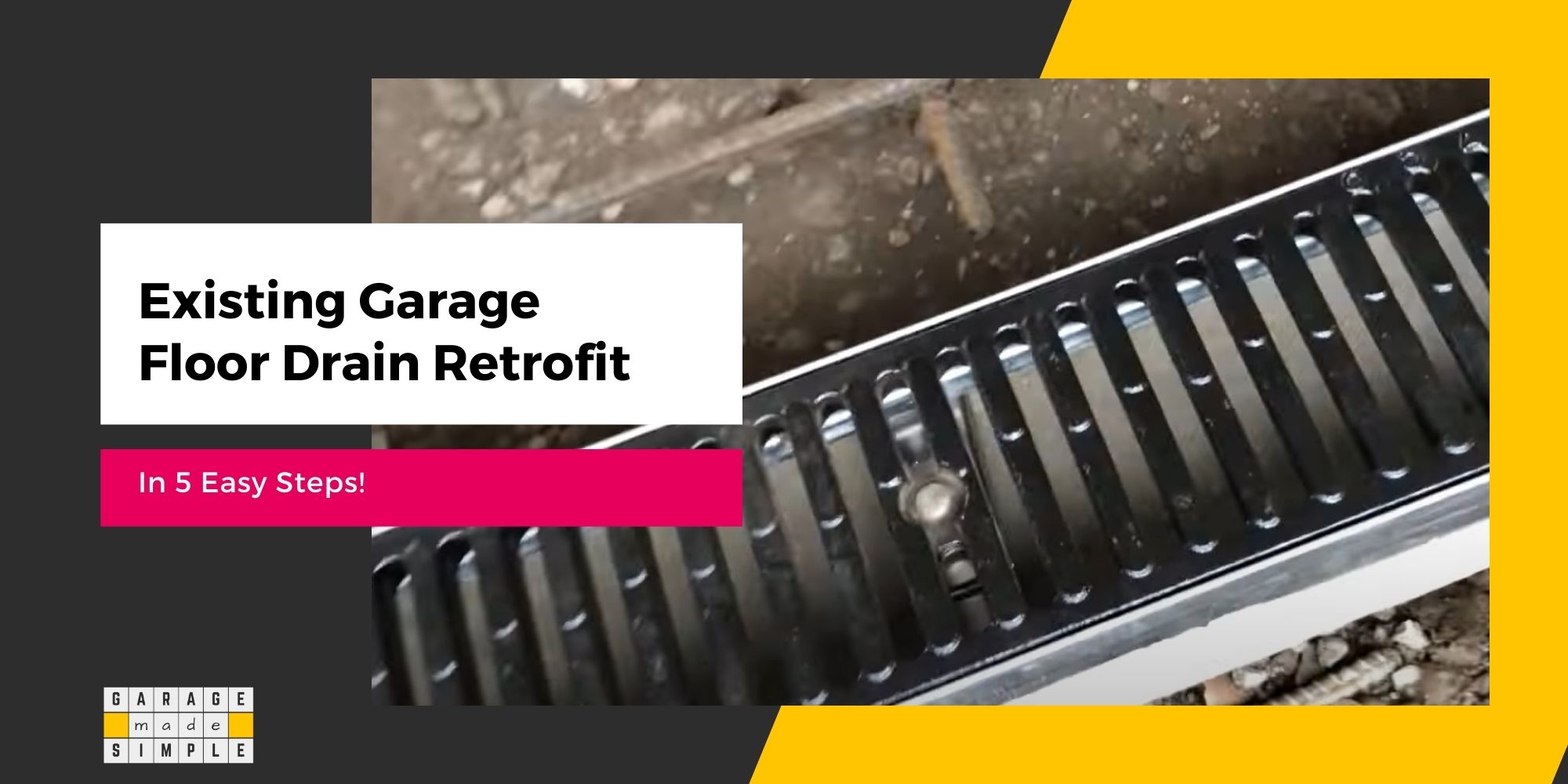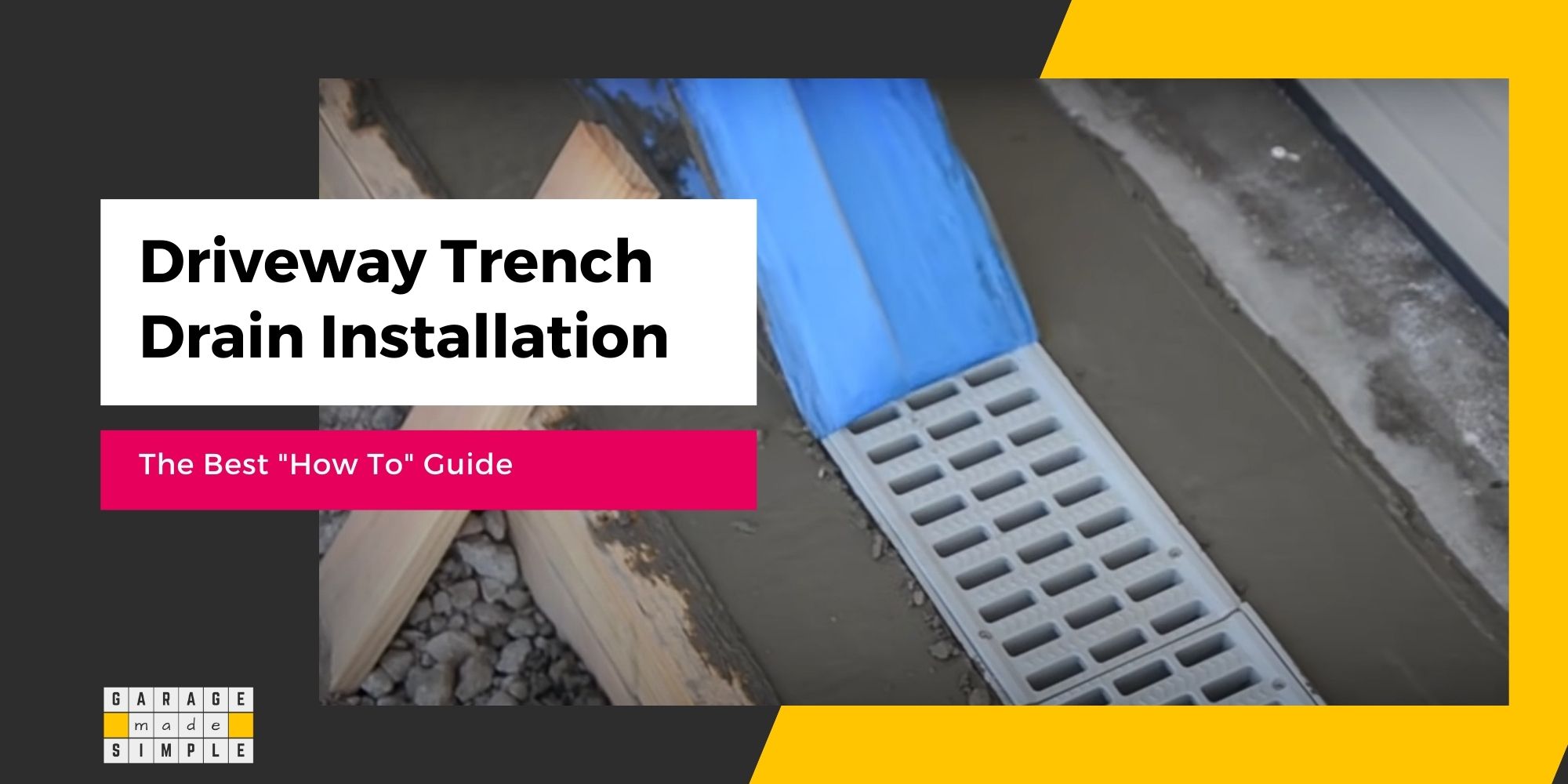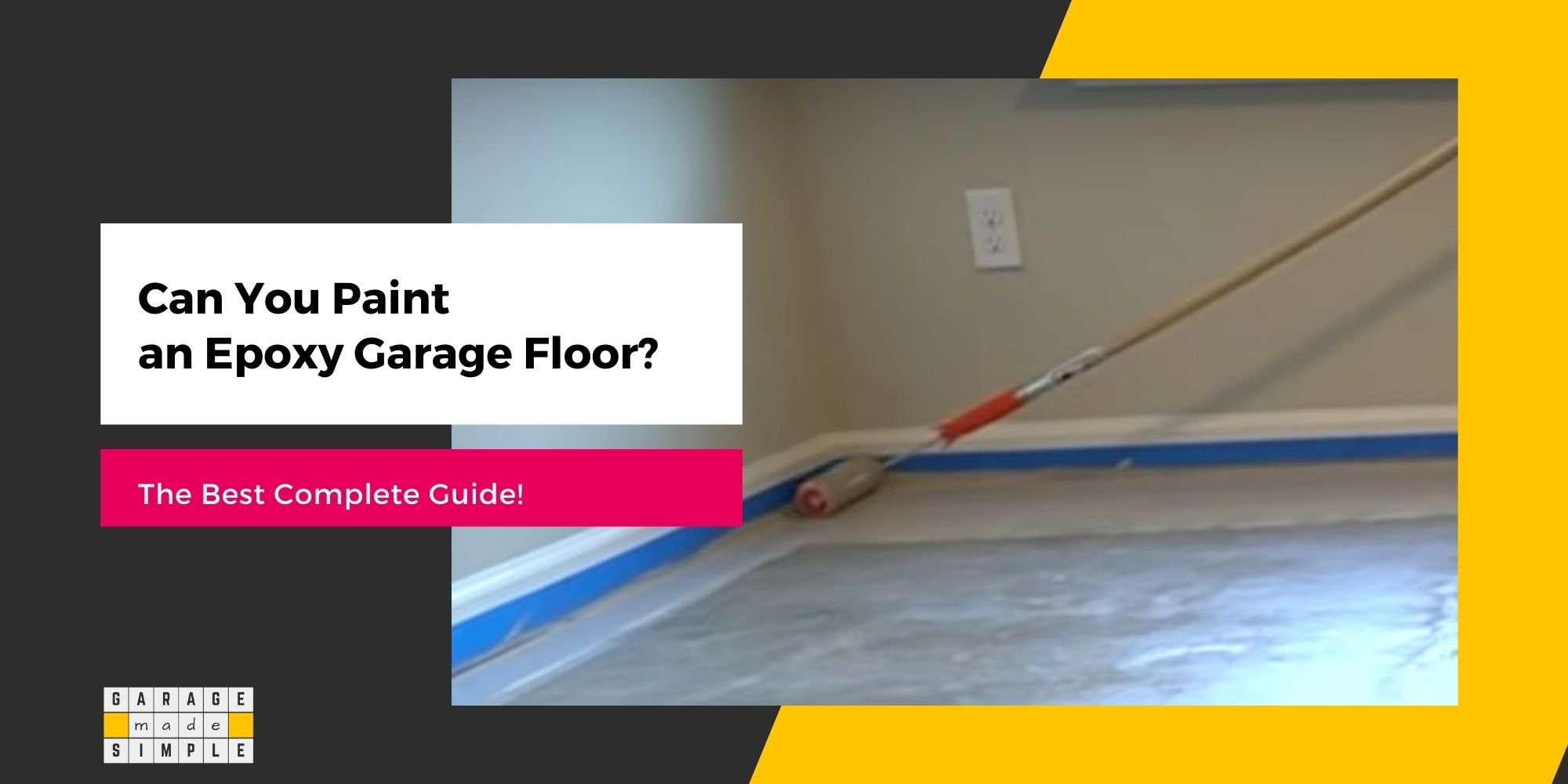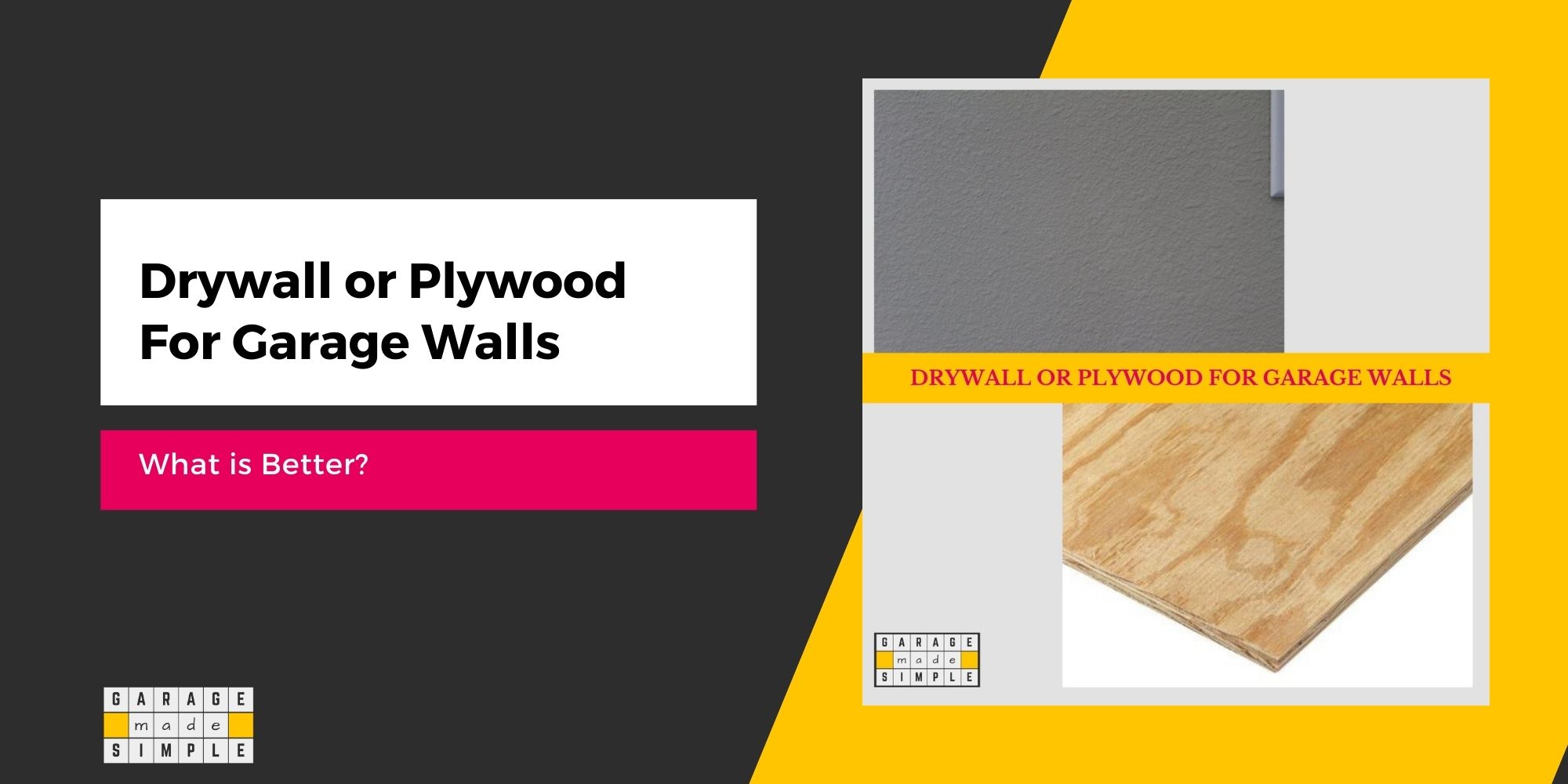Is Garage Paint Waterproof? The Truth is Amazing!
As an Amazon Associate, I earn from qualifying purchases.
Is Garage Paint Waterproof?
Are you thinking of painting your garage floor? And are you struggling with the question, Is garage paint waterproof?
Do you think painting will make your garage floor waterproof? Well, before you go and buy any garage paint that claims to be waterproof, read this article!
Most garage paints are not waterproof, even if they say so.
Keep in mind that waterproof and water resistant are different, even though the terms may be used interchangeably. Often the term waterproof is used quite loosely in the context of water permeability.
Similarly, paints and coatings are not the same thing, even though the terms are often used interchangeably.
Waterproof Vs Water Resistant
The difference between “waterproof” and “water resistant” is a matter of degree.
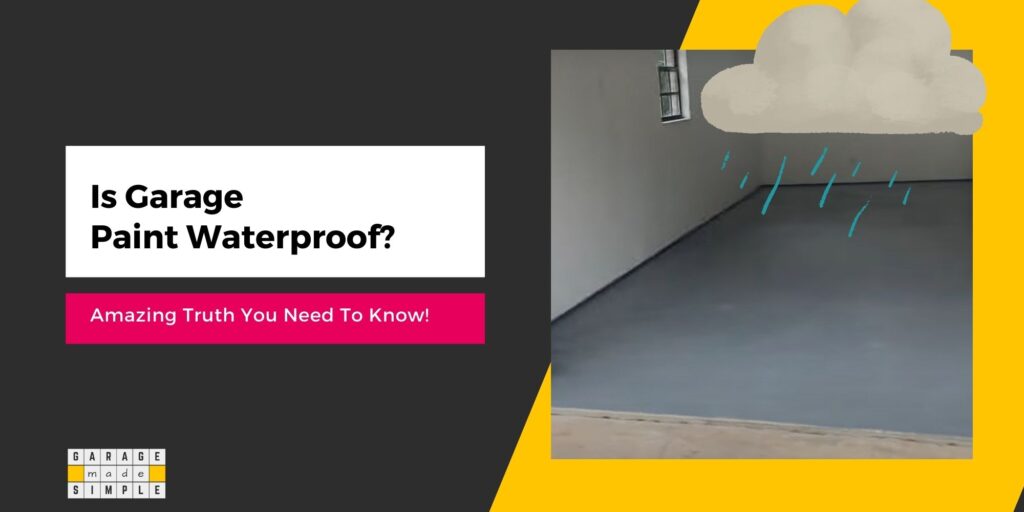
A product described as waterproof is completely impervious to water. Water will not pass though even under hydrostatic pressure. A waterproof object such as a raincoat is impervious to water.
A product described as water resistant will resist water from penetrating. It is effective when the quantity of water is small or there is no hydrostatic pressure. With time, water will penetrate a water resistant product or film.
Water Vapor Permeability
Water vapor permeability of a sheet, membrane or film is an indicator of its water resistance and is measured in “perms”. A perm rating is a standard measure of the water vapor permeability of a material.
The International Residential Code (IRC) categories vapor retarders based on their permeance (as defined above):
| CLASS | PERMEABILITY | PERM RANGE | EXAMPLES |
| Class 1 | Vapor Impermeable | 0.1 perms or less | Polyethylene (6 mil thick) or Aluminum Foil (1 mil thick) |
| Class 2 | Vapor Semi-Impermeable | 0.1 – 1.0 perms | Kraft facing on Insulation batts or ¼” Exterior Plywood |
| Class 3 | Vapor Semi-Permeable | 1.0 – 10.0 perms | Latex or Enamel Paint |
NOTE: Drywall has a perm rating of 50.0 and has extremely poor water resistance.
The higher the number, the more readily water vapor (in the gaseous state) can diffuse through the material. The lower the number, greater is the resistance to water vapor transmission.
If the perm rating is low enough, the material is classified as a vapor retarder. If it’s really low, it is classified as a vapor barrier.
Vapor barriers are effective up to about 75% relative humidity. Waterproofing membranes on the other hand will not allow even liquid water to permeate through.
By this definition, only membranes can be waterproof. Paints & even Coatings, can, at best, be Vapor Semi-permeable and water resistant to a degree.
Paint vs Coating
The difference between paints and coatings is in the process of film formation and the dry film thickness (DFT). Even professionals in the field of paints & coatings often use the terms interchangeably.
Garage paint typically refers to “garage floor paint” or “concrete floor paint”. The paint should have sufficient hardness & toughness to withstand the wear & tear from foot & vehicular traffic. It is also expected to have good adhesion to the concrete floor for durability.
Generally speaking garage floor paints available in the store can be classified as:
- Acrylic or Latex Paint
- Epoxy Paint (which in fact is a modified acrylic and is single pack)
- Epoxy Coating (a two pack product)
- Specialty Coatings (2 pack products based on modified epoxy or PU resin)
As an example when it comes to Epoxy Paint vs Epoxy Coating, the differences are:
- Epoxy Floor Paint is 1 part. while Epoxy Floor Coating is 2 parts.
- Epoxy Floor Paint “dries” while Epoxy Floor Coating “cures”.
- Dry Film Thickness (DFT) of Epoxy Floor Paint is less than 2 mils. while the DFT of Epoxy Floor Coating is more than 2 mils.
- Epoxy Floor Paint has lower solids and less Epoxy resin than Epoxy Floor Coating.
The words “coating” and “paint” are sometimes used interchangeably but technically speaking they are not the same. Using the correct terminology, we need to restrict our discussion to Acrylic/Latex and Epoxy Paints and exclude Epoxy & Specialty Coatings.
Is Concrete Floor Paint Waterproof?
DRYLOK® E1 Latex 1-Part Epoxy Concrete Floor Paint is quite popular as a paint for garage floors.
Often it is believed that this paint is waterproof. This is far from the truth! Even the product data sheet from the company accepts this.

To be fair, the company is quite truthful in declaring that DRYLOK® E1 Latex 1-Part Epoxy Concrete Floor Paint has extreme water resistance but is not waterproof by itself. In its data sheet and also a blog on its website it recommends use of certain waterproofing products before applying the garage floor paint.
Is 2 Part Epoxy Floor Coating Waterproof?
2 Part Epoxy Garage Floor Coating uses epoxy resin along with pigments & additives in the first part. The second part is a hardener. When the two are mixed, a chemical reaction takes place and liquid paint becomes a hard solid coating.
How weather resistant and waterproof this coating is, depends on the formulation. As a thumb rule the higher the epoxy component, the better will be the performance of the coating.
This is the reason for self leveling epoxy garage floor coatings can be quite impervious to water and can be classified as waterproof.
Rustoleum EpoxyShield is a very popular 2 Part Epoxy Garage Floor Coating. However, it does not claim to be waterproof.
Rustoleum RockSolid will have a far better performance when it comes to water resistance because it is 100% solid and will develop a much higher film thickness.
How Do I Waterproof My Concrete Garage Floor?
Just using paint or even a coating will not get you the best waterproofing. To waterproof your concrete garage floor you have to use a waterproofing membrane under the paint or coating.
Apply a coat or two of Liquid Rubber Multi-Purpose Primer on the bottom 6″ of the wall, the wall-floor joint and the concrete garage floor. The recommended coating thickness of the Multi-Purpose Primer is between 4-5 mils DFT with a spread rate of 200-250 square feet per gallon.
Apply 3-4 thick coats of Liquid Rubber Smooth Polyurethane Deck and Dock Coating on top, once the primer is dry. You can use a a brush, ⅜” nap roller or hopper style sprayer.
Liquid Rubber solidifies into a waterproof membrane. This can now be painted with Single Part Rustoleum Epoxy Shield Concrete Floor Paint using a ⅜” nap roller. This one part epoxy paint is self-priming and requires only one coat.
For more details check out my earlier blog post How To Waterproof Garage Floor? (A Simple 5 Step Guide!).
Thank you very much for reading the post. I do hope you found it informative and useful.

